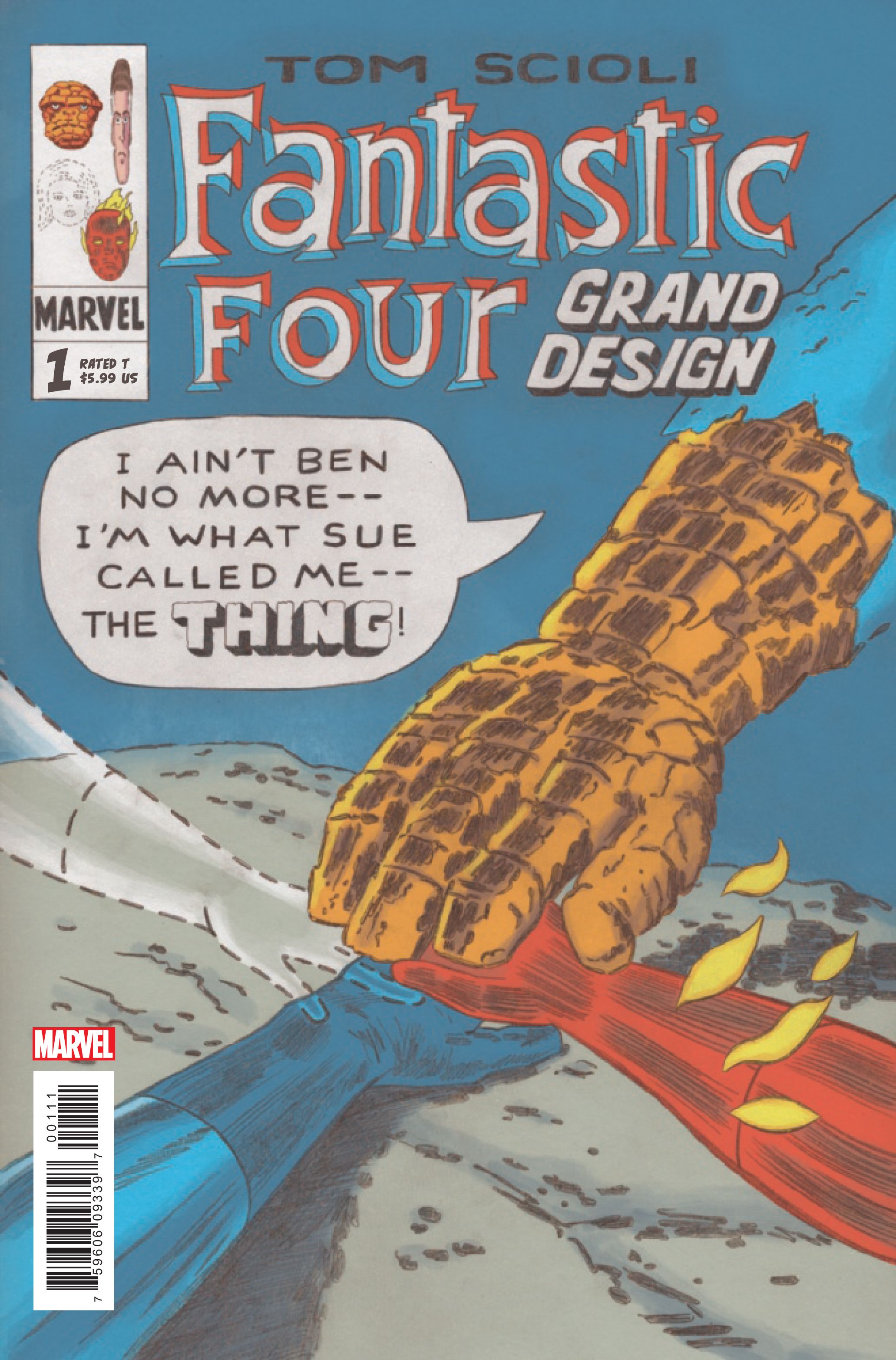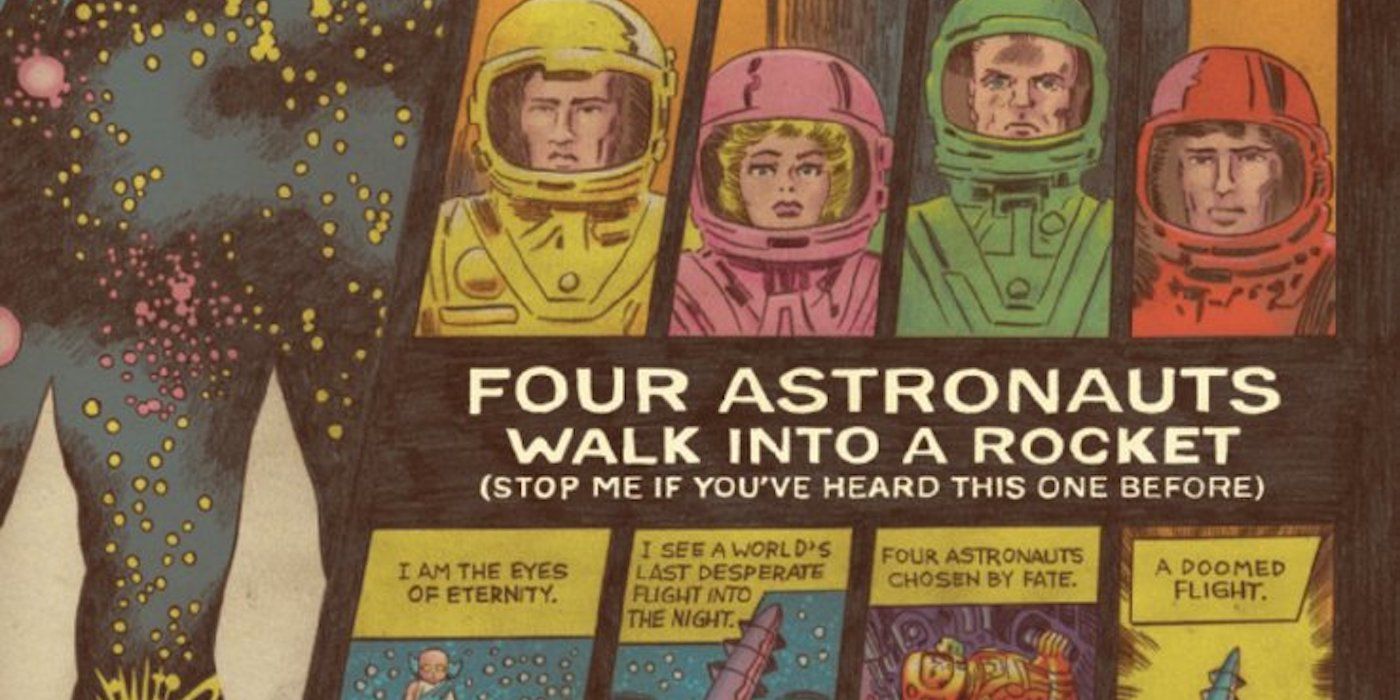Fantastic Four: Grand Design #1
- WRITER
- Tom Scioli
- Artist
- Tom Scioli
- Letterer
- Tom Scioli
- Cover Artist
- Ed Piskor, Tom Scioli
- Publisher
- Marve Comics
- Price
- 5.99
- Release Date
- 2019-10-30
- Colorist
- Tom Scioli
In the last couple of years, Marvel Comics has made a concerted effort to iron out all the wrinkles in certain areas of their continuity. With Ed Piskor's brilliant X-Men: Grand Design comics and Mark Waid, Mike O'Sullivan and Javier Rodriguez's insanely ambitious History of the Marvel Universe series, anyone can be something of a Marvel Comics expert without dumping their life savings on back issues. But these titles are more than just CliffsNotes for comics. They are retelling mythology for a new generation. They take iconic figures who transcend the medium and return them to their roots. These comics strip away the artifice and fit fractured timelines back together as if they were restoring priceless pieces of art.
Cartoonist and illustrator Tom Scioli (Godland) is deep into his restoration and retelling of the history of Marvel's First Family in the pages of Fantastic Four: Grand Design #1. The issue starts with a primer of sorts, recounting the ancient celestial incidents and character origins that will eventually dovetail into the narrative of Reed Richards, Sue Storm, Johnny Storm, and Ben Grimm.
To be fair, the first third of this issue can be a bit jarring. At times, it feels like someone trying to explain a dream they just had, but this sort of logic is how so many comic books operate.
Scioli might the perfect person to do a book like Fantastic Four: Grand Design. His work echoes Jack Kirby's, but the tune bouncing back is funkier in style. Where Kirby had a certain level of discipline in his renderings of ancient gods and superhero titans, Scioli picks his shots when it comes to sharp angles and high contrast images.
Reviewing the actual story of this issue is a fool's errand. It'd be like reviewing actual historical events, objectively. We can like or dislike how things have played out, but it doesn't change the fact they happened. It's how an artist tells the story that's important. Weaving a narrative, one which is inclusive of the facts, warts and all, and makes sense of them is what's important. It's what makes a historical tale (even a fictional one) have an emotional core.
Scioli's vision is singular in its execution, but much like Ed Piskor's X-Men: Grand Design books, it is all inclusive. There is no pretense here. Only open arms and a celebration of Marvel's First Family. Fantastic Four: Grand Design it another smart, funny, and endlessly entertaining resource book for new readers and obsessive fans, alike. There really isn't anything not to love here. Hopefully this sort of thing isn't a flash in the pan comic fad.
Fantastic Four: Grand Design #1 is available now.


